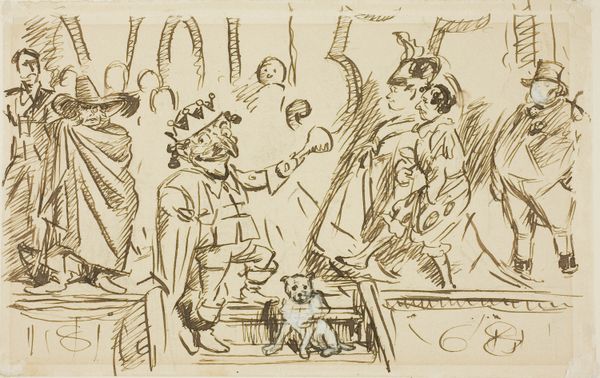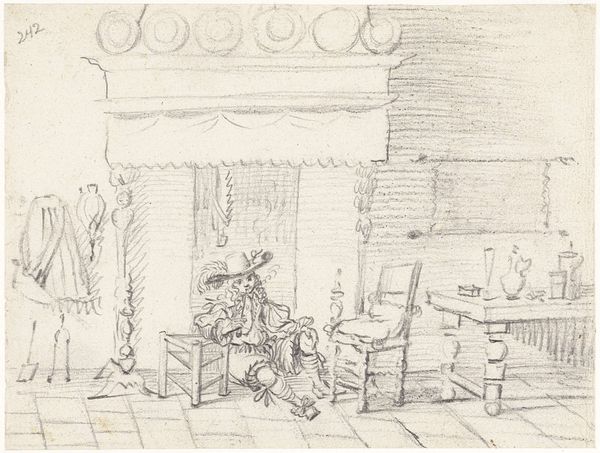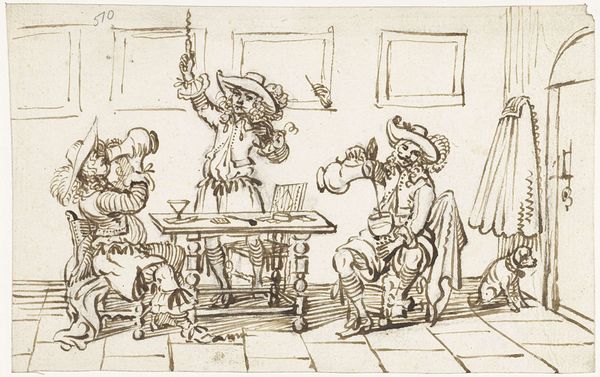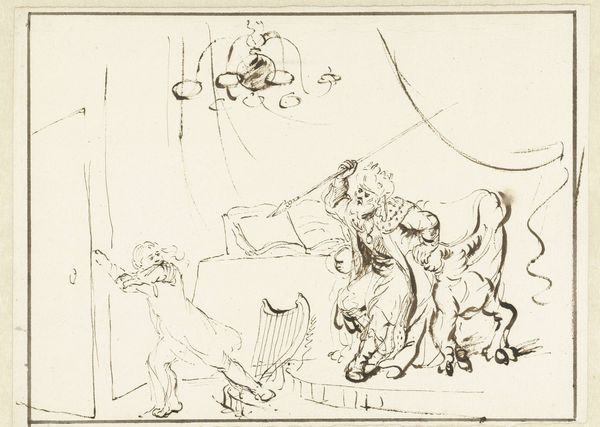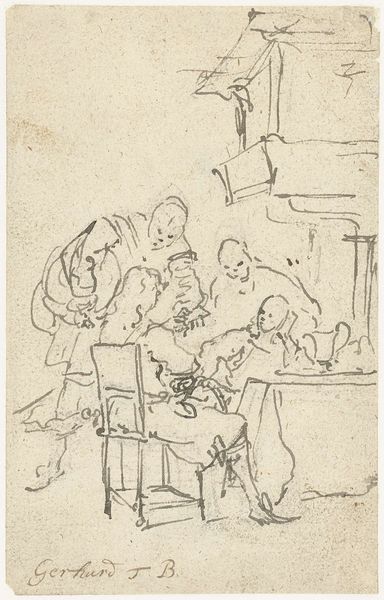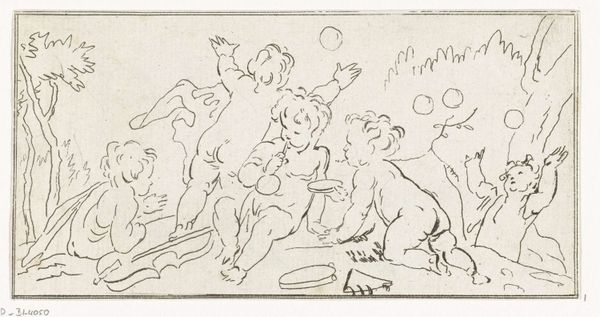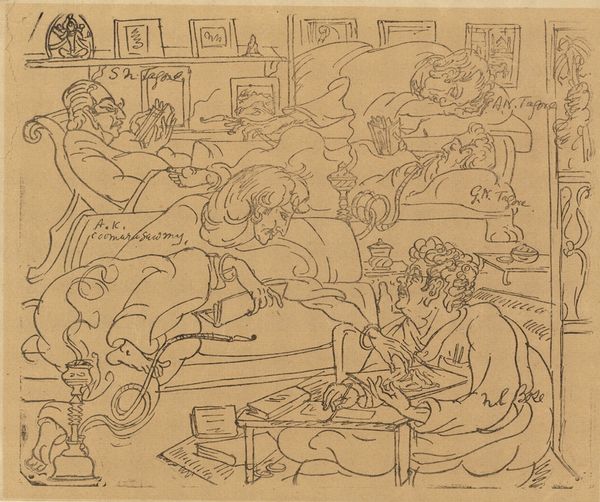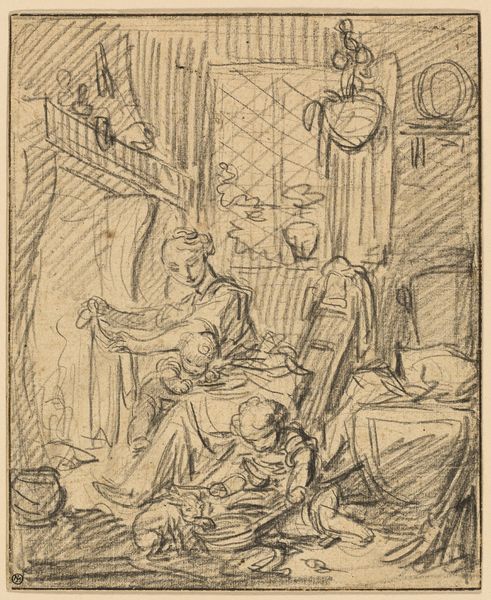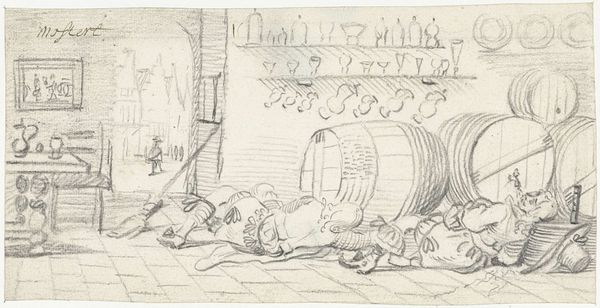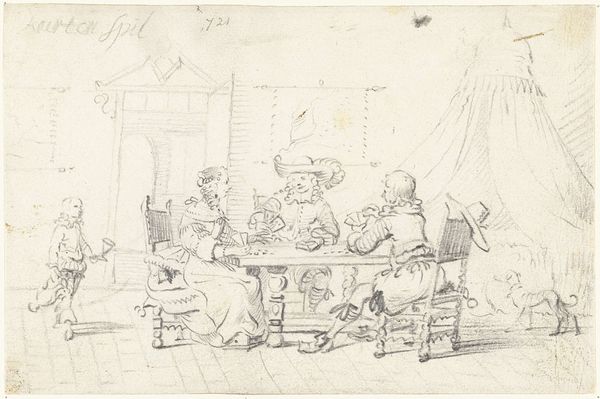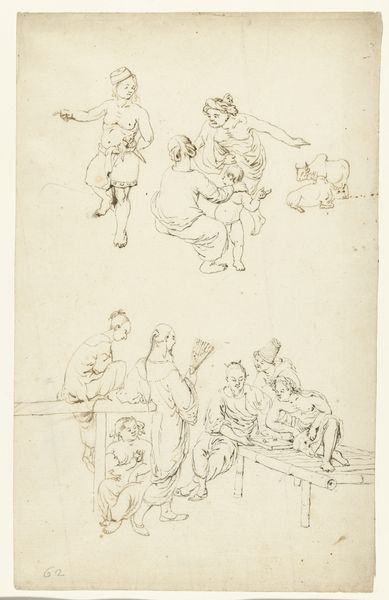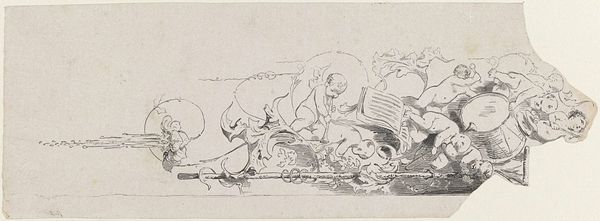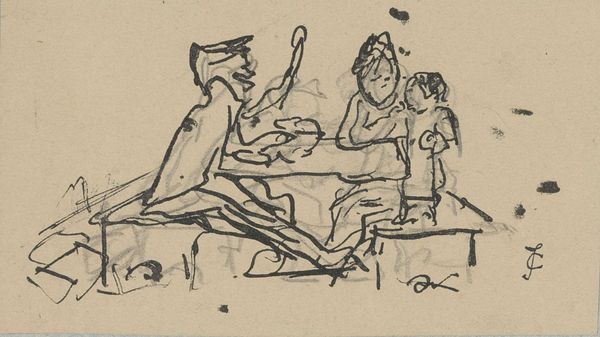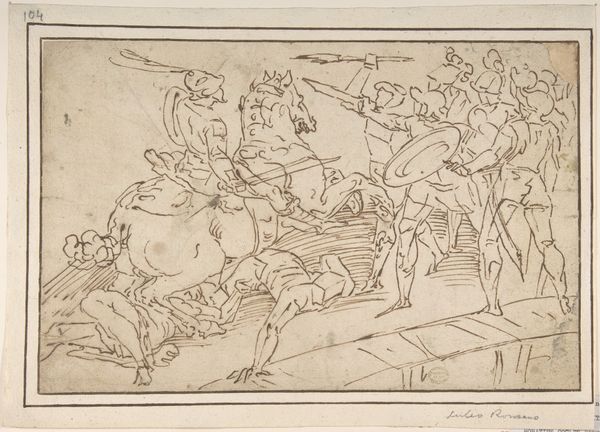
drawing, ink
#
drawing
#
baroque
#
dutch-golden-age
#
figuration
#
ink
#
genre-painting
Dimensions: height 105 mm, width 178 mm
Copyright: Rijks Museum: Open Domain
Editor: Here we have Gesina ter Borch's "Scene with Smoking and Drinking Men," made around 1653 using ink. It feels like a snapshot of a very specific, almost theatrical social scene. What jumps out at you about the creation and context of this drawing? Curator: For me, this drawing speaks volumes about the Dutch Golden Age's relationship with leisure and commerce. Notice how ter Borch meticulously renders the clothing of the men. These materials – the fabrics, the embellishments – they all signify wealth derived from trade. Even the act of smoking tobacco, a newly globalized commodity, becomes a display of status and access to trade networks. What labor underpinned the scene we see depicted? Editor: So you're saying that even something that seems like a simple depiction of everyday life can reveal broader economic realities? How does the drawing technique itself contribute to this understanding? Curator: Precisely! Look at the dynamism of the ink lines – they convey a sense of immediacy, but also, consider the artist's labor. The ink, the paper, the tools needed for the production of this drawing itself would’ve cost money! We can ask ourselves about who these artworks were made for. Were they bought as luxury goods themselves, or do they have an agitational message to bring to those in power? Ter Borch seems interested in depicting these wealthy men but her message remains ambiguous. Editor: That’s fascinating. I hadn’t considered the cost of materials or how the art itself might become another object of trade. Curator: Consider how ter Borch blurs the lines between ‘high art’ and simple craft here too, using inexpensive paper to mock powerful members of society. How are those power dynamics captured? Editor: Seeing the artwork as a product of labor and a commentary on consumerism gives me a totally different perspective. I’ll definitely think about the social and economic context behind every artwork now. Curator: And I'll try to consider my assumptions when analyzing art based on who may or may not have had access to making art materials.
Comments
No comments
Be the first to comment and join the conversation on the ultimate creative platform.
